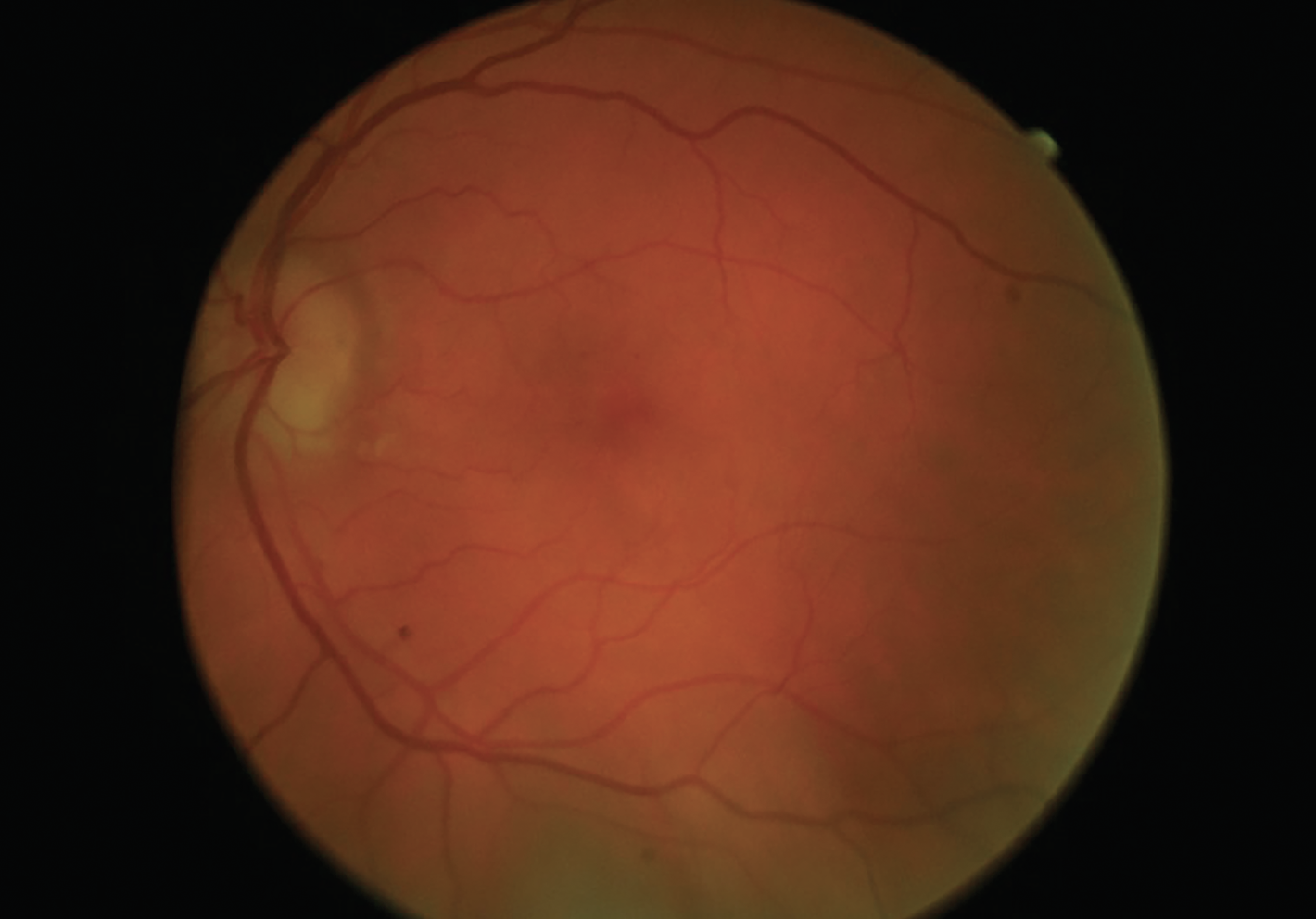 |
Q:
A patient came to me as a second opinion for “papilledema” after a diabetic injection. How does one make sense of this case?
“A 49-year-old male patient was seen with a history of sudden vision loss in one eye in May,” recounted Mike Zirkle, OD, owner of Progressive Optometry in Marion, IN. “The patient had been told by another eye doctor that he had papilledema and was referred to a neurologist for further workup, including an MRI and lumbar puncture. He did not make those appointments and presented to our office two months later.”
The patient described waking up with severe vision loss in one eye nine days after getting his first dose of Ozempic (semaglutide, Novo Nordisk). His medical history was positive for diabetes since 2012. He was using Lantus (insulin, Sanofi), Humalog (insulin lispro, Eli Lilly), metformin and Trulicity (dulaglutide, Eli Lilly). A1c was 7.1%. He was also taking medications for hypertension and hypercholesterolemia.
 |
|
Fig. 1. Patient’s left eye after Ozempic injection. Click image to enlarge. |
Mystery Revealed
His best-corrected vision was 20/20 OD and hand motion OS. There was a 3+ APD OS. Anterior segment findings were normal OU, and IOP by Goldmann was 18mm Hg OU. A dilated fundus exam revealed a flat, distinct optic nerve head in the right eye, with some mild pale swelling of the left nerve (Figure 1). Dilated macula and peripheral retina examination revealed a few scattered dot hemorrhages.
“Ischemic optic neuropathy (ION) was my working diagnosis, and I called his family physician who had seen him soon after the event and confirmed that his sedimentation rate and C-reactive protein (CRP) tests were normal,” said Dr. Zirkle. “This ruled out temporal arteritis and confirmed my initial impression of non-arteritic anterior ischemic optic neuropathy (NAION).”
He contacted the patient’s neurologist to inform him of the new diagnoses, and he subsequently canceled the lumbar puncture—for which the patient was most grateful. Why not papilledema, the initial diagnosis? That is a specific condition defined as bilateral optic nerve swelling secondary to increased intracranial pressure. Unfortunately, it is often used incorrectly as a synonym for a swollen disc.
Eye on New Drugs
Semaglutide in the drugs Ozempic and Wegovy (Novo Nordisk), as well as tirzepatide (Mounjaro, Eli Lilly), are glucagon-like peptide-1 (GLP-1) receptor analogues. These new medicines are typically used as once weekly injections for glycemic control and weight loss. They are highly effective and easy to administer and have become quite popular—even among non-diabetic patients. A recent presentation in July from researchers at Massachusetts Eye and Ear linked use of these GLP-1 inhibitors with vision loss attributed to NAION.1 After adjusting for other risk factors, the team found that there was a higher than 3% risk of developing NAION than for diabetic patients taking other treatments. The makers of these medicines maintain that a “causal association” has not been established. Males were at higher risk than females. Other risk factors in addition to diabetes include hypertension and hyperlipidemia.1
Even though NAION is rare, it is the second-most common cause of optic nerve damage after glaucoma. Even though this patient was on the very young end of the temporal arteritis age spectrum, a sedimentation rate and CRP should always be ordered in a timely manner to be sure vision loss does not occur in the fellow eye from this potentially devastating disease.
“As eye doctors who see many diabetic patients, clinicians need to be aware of new medications and their possible complications, and work with other healthcare providers to provide important information to our patients who are taking or considering these new treatment options,” Dr. Zirkle emphasized.
Dr. Ajamian is board certified by the American Board of Optometry and serves as Center Director of Omni Eye Services of Atlanta. He is vice president of the Georgia State Board of Optometry and general CE chairman of SECO International. He has no financial interests to disclose.
1. Hathaway JT, Shah MP, Hathaway DB, et al. Risk of nonarteritic anterior ischemic optic neuropathy in patients prescribed semaglutide. JAMA Ophthalmol. 2024;142(8):732-9. |

